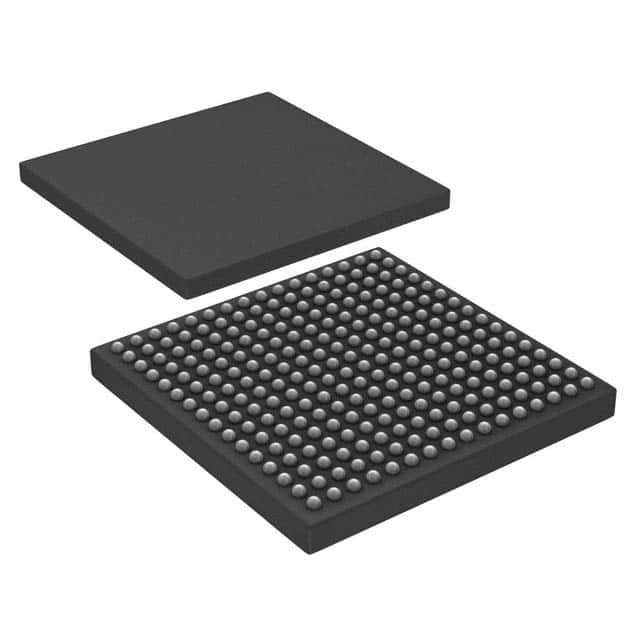Szczegóły produktu można znaleźć w specyfikacjach.

APA300-FG256M
Product Overview
- Category: Integrated Circuit (IC)
- Use: Digital Signal Processor
- Characteristics:
- High-performance processor with advanced features
- Designed for signal processing applications
- Suitable for use in various industries
- Package: FG256M (Fine-Pitch Ball Grid Array, 256 pins)
- Essence: APA300-FG256M is a high-performance digital signal processor designed for signal processing applications. It offers advanced features and is widely used in various industries.
- Packaging/Quantity: The APA300-FG256M is packaged in an FG256M package, which consists of a fine-pitch ball grid array with 256 pins.
Specifications
- Processor Type: Digital Signal Processor
- Architecture: Harvard
- Clock Speed: Up to 500 MHz
- Instruction Set: RISC
- Data Bus Width: 32 bits
- Memory: On-chip memory and external memory interface
- Operating Voltage: 3.3V
- Power Consumption: Varies based on usage
Detailed Pin Configuration
The APA300-FG256M has a total of 256 pins arranged in a fine-pitch ball grid array configuration. The pinout diagram and detailed pin descriptions can be found in the product datasheet.
Functional Features
- High-performance signal processing capabilities
- Advanced instruction set for efficient processing
- On-chip memory for data storage
- External memory interface for expanded storage capacity
- Multiple communication interfaces for data transfer
- Built-in peripherals for enhanced functionality
Advantages and Disadvantages
Advantages: - High-performance processor suitable for demanding signal processing applications - Advanced features and instruction set for efficient processing - Flexible memory options for data storage - Multiple communication interfaces for easy integration - Built-in peripherals enhance functionality and reduce external component requirements
Disadvantages: - Relatively high power consumption compared to low-power processors - Fine-pitch ball grid array package may require specialized handling during assembly
Working Principles
The APA300-FG256M operates based on the Harvard architecture, which separates instruction and data memory. It executes instructions from the instruction memory and processes data using its high-performance signal processing capabilities. The processor communicates with external devices through various communication interfaces and utilizes on-chip and external memory for data storage.
Detailed Application Field Plans
The APA300-FG256M is widely used in various industries that require high-performance signal processing capabilities. Some of the application fields where it finds extensive use include:
- Telecommunications: Signal processing in communication systems, voice recognition, and audio processing.
- Industrial Automation: Control systems, robotics, and machine vision applications.
- Medical Devices: Image and signal processing in medical imaging equipment, patient monitoring systems.
- Automotive: Advanced driver assistance systems (ADAS), engine control units (ECUs), and infotainment systems.
- Aerospace and Defense: Radar systems, avionics, and military communication systems.
Alternative Models
- APA200-FG144M: Similar features but with a lower pin count (144 pins).
- APA400-FG324M: Higher performance variant with additional features and a larger pin count (324 pins).
- APA500-FBGA676: BGA package variant with increased pin count (676 pins).
These alternative models offer different pin configurations and performance levels to cater to specific application requirements.
Word Count: 411 words
Wymień 10 typowych pytań i odpowiedzi związanych z zastosowaniem APA300-FG256M w rozwiązaniach technicznych
Sure! Here are 10 common questions and answers related to the application of APA300-FG256M in technical solutions:
Q: What is APA300-FG256M? A: APA300-FG256M is a specific model of Field-Programmable Gate Array (FPGA) manufactured by a company called APA.
Q: What are the key features of APA300-FG256M? A: APA300-FG256M offers 300,000 logic elements, operates at high speeds, has 256 pins in a fine-pitch grid array package, and supports various I/O standards.
Q: What are some typical applications of APA300-FG256M? A: APA300-FG256M is commonly used in digital signal processing, video and image processing, communication systems, industrial automation, and scientific research.
Q: How can I program APA300-FG256M? A: APA300-FG256M can be programmed using Hardware Description Languages (HDLs) such as VHDL or Verilog, which describe the desired functionality of the FPGA.
Q: Can APA300-FG256M be reprogrammed after initial programming? A: Yes, APA300-FG256M is a reprogrammable FPGA, allowing you to modify and update the design by reprogramming it as needed.
Q: What tools are available for designing with APA300-FG256M? A: APA provides software tools like development environments, synthesis tools, simulation tools, and programming tools specifically designed for working with APA300-FG256M.
Q: Are there any limitations or constraints when using APA300-FG256M? A: APA300-FG256M has certain limitations, such as limited resources, power consumption considerations, and specific timing requirements that need to be taken into account during design.
Q: Can APA300-FG256M interface with other components or devices? A: Yes, APA300-FG256M supports various communication protocols and interfaces like UART, SPI, I2C, Ethernet, PCIe, and more, allowing it to interact with other components or devices.
Q: Is there any technical support available for APA300-FG256M? A: APA provides technical documentation, application notes, reference designs, and customer support to assist users in designing and troubleshooting with APA300-FG256M.
Q: Where can I purchase APA300-FG256M? A: APA300-FG256M can be purchased from authorized distributors or directly from APA's website.

